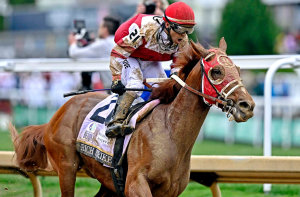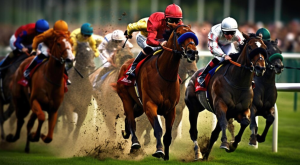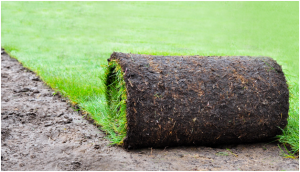Dealing with horses used to be limited to riding on horseback. Today, however, ground work with the horse has become a matter of course. In this article we want to bring you closer to this method, working with the horse from the ground.
Ground work with the horse – in general
With the help of the ground work, the balance, the serenity and the rhythm of the horse should be promoted. The main goal, however, is to teach the horse to give in to any slight pull or pressure in a willing and controlled manner. This means that the sensitivity of the horse should be strengthened. Working with the horse also creates respect and trust. Respect especially for horses that behave in a defiant manner towards you and trust in horses with a strong instinct to flee.
But is the ground work a kind of rider movement No! Ground work with the horse can be an exciting change from riding. It prepares the horse for breaking in and enables you and your horse to learn new tasks more quickly and easily.
The first steps
The first form of groundwork with the horse, which usually begins with young horses, is simple leading. Here you put a halter on your horse and lead it with the help of a lead rope. Depending on the style of training, horses sometimes learn to be led from the age of the foal. Others only get used to leading systematically when they start riding.
Leading should be the first step in any ground work. If your horse does not obediently let itself be led by the rope, further exercises, such as working by hand and special leading exercises, make little sense. If you want to start with the leadership exercises, you can try the following exercises
Stopping the horse should at the command Steeeh! ‘ stop next to you and remain standing until the next command
Come with me! “ sounds. Now your horse should immediately follow you again
If your horse already listens well to the first two commands, you can also train to back away. At the command “ Back! ‘ and light pressure with the palm of your hand on the bridge of the nose, your horse should lean backwards.
And directing sideways can also be a lead exercise for you and your horse. To do this, you stand to the side of your horse and give gentle driving aids with the help of the whip. Every time your horse steps over with a leg, i.e. moves sideways, you immediately praise him. This continues until the side steps become a fluid movement.
Each exercise should be repeated a few times. But not too often either, so that you both learn a lot but don’t get bored. It is also an advantage if you do the exercises in a closed area such as a paddock or riding arena. A lateral limitation is advantageous for the exercises. In addition, there is sometimes a risk, especially with young horses, that they will tear themselves away. You can catch it again straight away on a cordoned-off area.
Build course
Once you have the basic commands in place and you have your horse under control, you can even start building a whole course with different stations that you have to go through with your horse. In this way you can strengthen the trust in your horse and specifically reduce fears and unrest. A course could look like this
Station 1 – Poles Here you place several poles one meter apart. A few at first, more later. Your horse has to estimate the distances correctly during the exercise
Station 2 – Maze The maze is constructed from two logs with a length of approximately four meters for the outside and four logs with a length of two meters for the inside. The two-metre poles are placed across the long outside poles, creating alternating passages. Lead your horse slowly and carefully through the aisles, making it bend left and right
Station 3 – Slalom For the slalom you can use tin barrels, plastic barrels or makeshift poles that you set up in a row with large gaps between them. The horse is then led around and between the barrels. If the exercise works well, the barrels can be arranged at different distances (closer, further) to increase the difficulty and make the exercise varied
Station 4 – Tarpaulin At this station you only need a tarpaulin. You can get these at the hardware store. Lead your horse over the tarpaulin or carefully try to put it on the horse’s back
There are no limits to your imagination on such a course. You should be calm, relaxed, relaxed and attentive during these exercises so that the work is successful. You can talk to the horse, encourage it, show it, praise it, be patient and above all you should give your horse time. If your horse is unsure, give it enough time to get used to the unfamiliar tasks. Step by step you will reach success.
Lunging gymnastics and training at the same time
Another great way to engage with the horse from the ground is lunging . To put it simply, lunging is letting the horse run on a long line within a circular path. It is used for compensatory gymnastics, as the horses move without the weight of the rider and still receive effective training.
In addition, you have the opportunity to observe your horse in motion while lunging. This way you can better assess the development over a longer period of time. Many aspects that play a major role when working under the saddle can be better grasped by the eye, i.e. when lunging, especially by less experienced riders. Training on the lunge accompanies rider and horse through the years, across all training levels and has a positive, complementary influence on the training.
Freedom dressage and circus
Circus exercises and freedom dressage are very popular when it comes to ground work with the horse. With this type of ground work, the horse is taught small tricks such as kneeling, complimenting, sitting or lying down. Through the lessons on earth, dominant horses, very young stallions and geldings are shown a playful path to obedience. In addition, hesitant, insecure or anxious horses can gain self-confidence through exercises such as walking over a tarpaulin or climbing onto a platform.
The aim is for you to be able to steer your horse with the help of body signals and your voice. At the beginning of the exercises you can of course use a halter and the rope. In order to be able to guide the horse without aids, it is very important to know your horse inside out. Not every circus and freedom dressage exercise serves the same purpose and is suitable for every horse. With horses that are already dominant, for example, you should refrain from rearing. However, the Spanish walk or the compliment are quite suitable and improve the quality of the gait when working under saddle.
In particular, intelligent horses that quickly get bored with normal work benefit from circus exercises. And those who are lazy to think are also activated. Most of the lessons are unsuitable for horses with joint problems and other weaknesses in the bony or muscular musculoskeletal system. Because most circus lessons also have a gymnastic effect at the same time.
The Compliment, Kneeling, Lying, Sitting, Spanish Step and Climbing exercises train a large number of muscle groups that are also used in horseback riding and driving. Regular training prevents by stretching and strengthening tendons, ligament and muscle injuries. Likewise, through targeted training, tension can be prevented or existing ones can be released. Exercises in which the horse falls to the ground also train balance, which is an ideal addition, especially for young horses before breaking in (from about 3 years) or, of course, for horses whose problem lies precisely here.
If you have any other questions, you can check out this community at: https://horsecare24.com
Conclusion
So you can see that ground work with the horse, in addition to classic riding, is an important building block in the work between horse and rider. Whether parcours, lunge, circus exercises or freedom dressage. The possibilities of ground work are numerous and still pursue the same goal! Creating a bond and blind trust between you and your horse. No matter whether you want to reduce fears and strengthen your horse’s self-confidence, or whether you want to put a stop to dominant animals. Ground work allows you to train your horse in a targeted manner. Relaxation, gymnastics and variety are a nice side effect.




